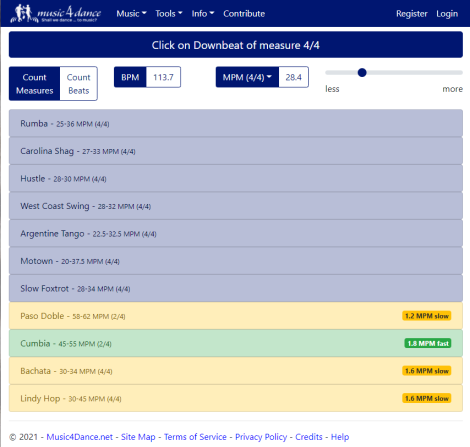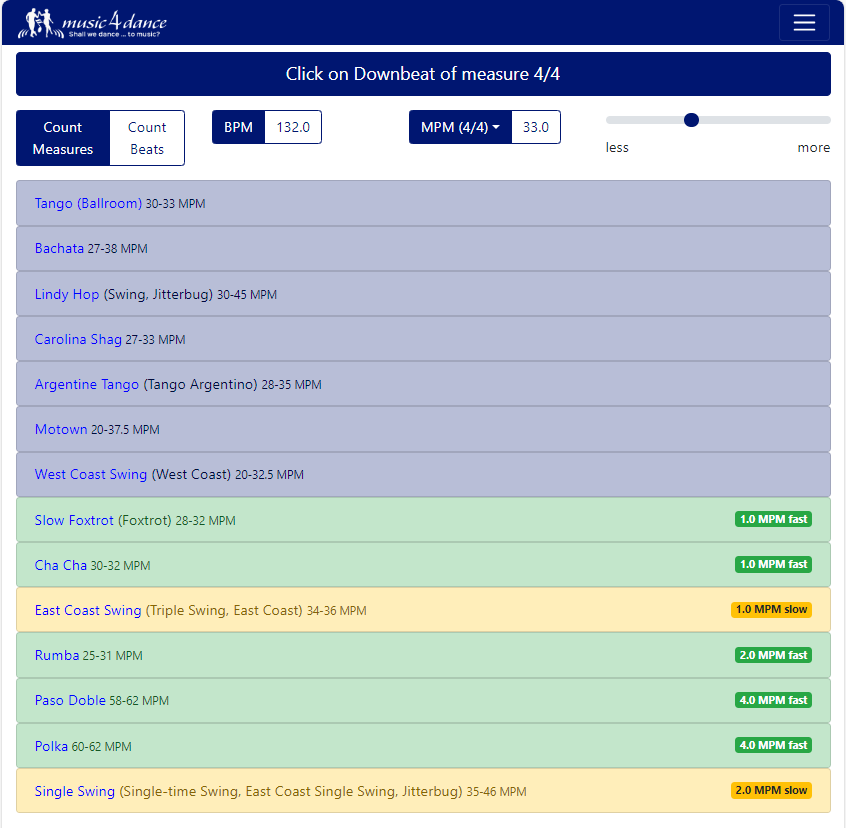Update (January 2024): Unfortunately, Spotify deprecated the feature that allowed me to create arbitrary playlists at the bottom of each search page some time ago. The rest of this post is still accurate, but the Spotify tip will no longer work. If you are specifically interested in DWTS playlists, please send feedback and I will consider writing a feature to generate them.
I learned to dance in part because Dirty Dancing made me want to be Johnny Castle. Or at least dance like him. And my first dance partner was similarly moved by Strictly Ballroom. These days So You Think You Can Dance and Dancing With the Stars are both inspirations for aspiring dancers.
Since one of my goals with the music4dance project is to build a catalog of music that inspires you to dance, it seems appropriate to make sure I’m folding in the songs that the choreographers from these shows have found inspiring. I’ve started by adding in the songs from (season 20) of Dancing with the Stars since that is currently airing.
All of the Dancing with the Stars songs that I’ve cataloged can be found at this link. You can refine your search to a particular episode by clicking on the episode number and choosing to include that episode.
One fun side effect of this is that you can click play on the Spotify Player at the bottom of the page and play all of the songs from an episode (or you can follow the individual links to iTunes or Amazon to purchase the songs). Here’s an example of the spotify player for DWTS Season 20, Episode 1:
What other movies and shows have inspired you to dance? Did they include specific songs that really make you want to get up and move?
Before you go, I’m continuing to gather data on how people group dance styles and would appreciate your input. More information about that is available in this post. Or just go directly to the survey.



